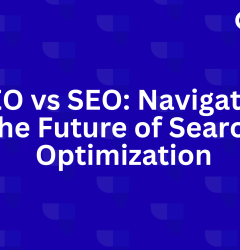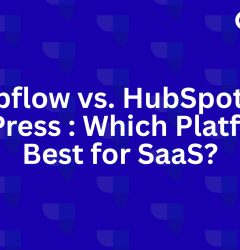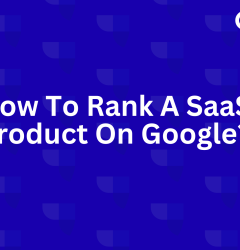30 Jun

Published by: Amit Kakkar
Published on: June 30, 2024
Last updated on: December 18, 2025
Last Updated on December 18, 2025 by admin
Globally, there are nearly 31,000 Software-as-a-Service (SaaS) companies.
According to Satista, 85% of businesses are currently running on Saas based platforms. By the end of 2026, it’s predicted that SaaS will be responsible for 85% of company software use.
In this fast-paced and competitive world of SaaS, it takes a lot of effort to stay your business ahead of your competitors. especially when it comes to appearing at the top of Google search results.
Conducting an SEO audit is a crucial step in ensuring your SaaS business remains visible and attractive to potential customers.
However, it’s easy to make mistakes during this process, which can significantly impact your search engine rankings and overall online presence.
To help you navigate this complex task, here are some common mistakes to avoid while conducting SEO audits for SaaS.
10 SaaS SEO Mistakes to Avoid in 2026
Below are some common SaaS SEO mistakes with tips on how to avoid them.
Mistake 1: Not Knowing and Understanding Your Customers
To attract and engage your audience effectively, you must understand who they are and what they need. Creating appealing content is impossible without knowing your target audience and their expectations from your product or service.
Additionally, user experience plays a significant role. Everyone prefers a fast, smooth, and efficient experience, which you can provide by using keywords that align with customer queries.
Understanding the intent behind search queries is also crucial. For example, someone searching “Best CRM Software” is at the discovery stage, while someone searching “buy top CRM software for small business” is ready to purchase. Sending both users to the same content is illogical and a significant marketing mistake.
How to avoid it:
- Understand the macro trends in your industry and how they affect consumer behavior.
- Combine both to get a comprehensive view of changing behaviors.
- Align your findings with your keyword strategy to ensure relevance.
Mistake 2 : Neglecting Keyword Research
Neglecting keyword research is a critical misstep for SaaS companies as it undermines their ability to effectively connect with their target audience.
Comprehensive keyword research is essential for understanding the exact terms and phrases potential customers use when searching for solutions.
Without this foundational knowledge, content creation efforts can miss the mark, failing to address user intent and reducing visibility in search engine results.
How to avoid it:
- Use keyword research tools like Google Keyword Planner, Ahrefs, SEMrush, and Moz to identify relevant keywords.
- Focus on long-tail keywords that reflect user intent and have lower competition.
- Incorporate keywords naturally into your content and ensure they align with your audience’s search queries and needs.
Mistake 3 : Not Having an SEO Plan & Roadmap
Neglecting keyword research is a critical misstep for SaaS companies as it undermines their ability to effectively connect with their target audience.
Comprehensive keyword research is essential for understanding the exact terms and phrases potential customers use when searching for solutions.
Without this foundational knowledge, content creation efforts can miss the mark, failing to address user intent and reducing visibility in search engine results.
How to avoid it:
- Develop a comprehensive SEO strategy that includes goals, target keywords, content calendar, and metrics for success.
- Create an actionable roadmap outlining tasks, responsibilities, and timelines.
- Regularly review and update your plan to adapt to changes in the SEO landscape and your business goals.
Mistake 4 : Having Duplicate Content
Duplicate content poses a significant risk to the SEO performance of SaaS websites by confusing search engines and diluting site authority.
When multiple pages contain identical or very similar content, search engines may struggle to determine which version is most relevant to display in search results.
This can lead to lower rankings for all versions of the content or even penalties for violating search engine guidelines. Moreover, duplicate content undermines user experience by offering little value or differentiation.
How to avoid it:
- Use canonical tags to indicate preferred versions of similar content.
- Rewrite or consolidate duplicate content to make it unique and valuable.
- Regularly audit your content to identify and resolve duplication issues.
Mistake 5 : Publishing Unoriginal content
Publishing unoriginal content is detrimental to the SEO efforts of SaaS companies as it fails to provide unique value to users and search engines alike.
It fails to capture audience interest and may result in reduced engagement metrics.
Search engines prioritize high-quality, original content that addresses user queries and provides valuable insights or solutions. Unoriginal content not only risks duplicate content penalties but also fails to differentiate the brand in a competitive market.
How to avoid it:
- Create unique and insightful content that addresses your audience’s pain points and interests.
- Offer fresh perspectives, data-driven insights, or case studies to differentiate your content.
- Invest in content quality and relevance to enhance engagement and SEO performance.
Mistake 6 : Not optimizing for local and technical SEO
Neglecting local and technical SEO optimizations can limit the visibility and usability of SaaS websites in search engine results.
Local SEO is crucial for SaaS companies targeting specific geographic markets, as it helps them appear in relevant local search queries and Google Maps results.
Technical SEO factors, such as site speed, mobile responsiveness, and secure browsing (HTTPS), directly impact user experience and search engine rankings.
Ignoring these optimizations can lead to higher bounce rates, lower conversion rates, and diminished trust among users and search engines alike.
How to avoid it:
- Optimize your Google My Business listing for local SEO.
- Implement structured data markup to enhance search engine understanding of your content.
- Ensure fast loading times, mobile responsiveness, and secure browsing (HTTPS) for better technical SEO.
Mistake 7: Not Optimizing Images and Videos
Overlooking the optimization of images and videos deprives SaaS companies of valuable opportunities to enhance user engagement and search engine visibility.
Visual content plays a crucial role in attracting and retaining user attention, yet improperly optimized images and videos can slow down page load times and hinder overall site performance.
Image and video optimizations not only boost SEO rankings but also contribute to higher engagement metrics and increased conversions.
How to avoid it:
- Optimize image alt text with relevant keywords for SEO and accessibility.
- Compress images to reduce file size without compromising quality.
- Host videos on platforms like YouTube and optimize titles, descriptions, and tags for SEO.
Mistake 8: Using Bad Link-Building Practices
Engaging in unethical or low-quality link-building practices poses serious risks to the SEO integrity and reputation of SaaS companies. Search engines prioritize natural, high-quality backlinks as a measure of a website’s authority and relevance.
Conversely, participating in link schemes, buying links, or acquiring links from spammy websites can result in penalties that diminish search engine rankings and erode user trust.
By building a diverse and authoritative backlink profile, companies can strengthen their SEO efforts and maintain a positive online reputation.
How to avoid it:
- Focus on earning high-quality backlinks through content partnerships, guest blogging, and networking.
- Monitor your backlink profile and disavow toxic links to maintain a healthy link profile.
- Prioritize natural link acquisition through valuable content and ethical outreach practices.
Mistake 9: Ignoring User Experience (UX)
Ignoring user experience (UX) can have detrimental effects on the SEO performance of SaaS websites, leading to higher bounce rates, lower dwell times, and reduced conversions.
Search engines prioritize websites that deliver a positive UX by providing fast loading times, intuitive navigation, and mobile responsiveness. Poor UX indicators signal to search engines that a website may not meet user expectations, resulting in lower rankings in search results.
By prioritizing the needs and preferences of their target audience, companies can foster higher levels of user satisfaction, increase organic traffic, and achieve sustainable growth.
How to avoid it:
- Optimize site navigation and structure for intuitive user experience.
- Ensure fast loading times, especially on mobile devices.
- Create engaging and informative content that meets user needs and expectations.
Mistake 10 : Not staying updated with SEO Trends
Failing to stay updated with evolving SEO trends and algorithm changes can leave SaaS companies vulnerable to outdated strategies that hinder their ability to compete effectively in search engine rankings.
Search engines continuously refine their algorithms to deliver more relevant and user-friendly search results, and failing to adapt can result in diminished visibility and missed opportunities for growth.
Staying updated with SEO trends allows companies to capitalize on new opportunities, optimize their digital presence, and maintain a competitive edge in their respective markets.
How to avoid it:
- Follow reputable SEO blogs, forums, and industry news for updates and insights.
- Participate in continuing education and professional development to stay current with best practices.
- Adapt your SEO strategy based on emerging trends and algorithm updates to maintain competitive advantage.
Let Growthner Help You Improve Your SaaS SEO
Avoiding these common mistakes requires continuous effort and attention. It involves staying updated, regularly checking your strategies, and consistently refining your approach.
When done correctly, the benefits are substantial: increased website traffic, more qualified leads, higher conversion rates, a strong reputation, trust from customers, and recognition among other SaaS companies.
However, if you find yourself lacking the time, interest, or expertise to manage these tasks effectively, consider reaching out to the Growhtner team. We specialize in handling all aspects of SEO and digital marketing, allowing you to focus on expanding your business confidently.







Amit Kakkar